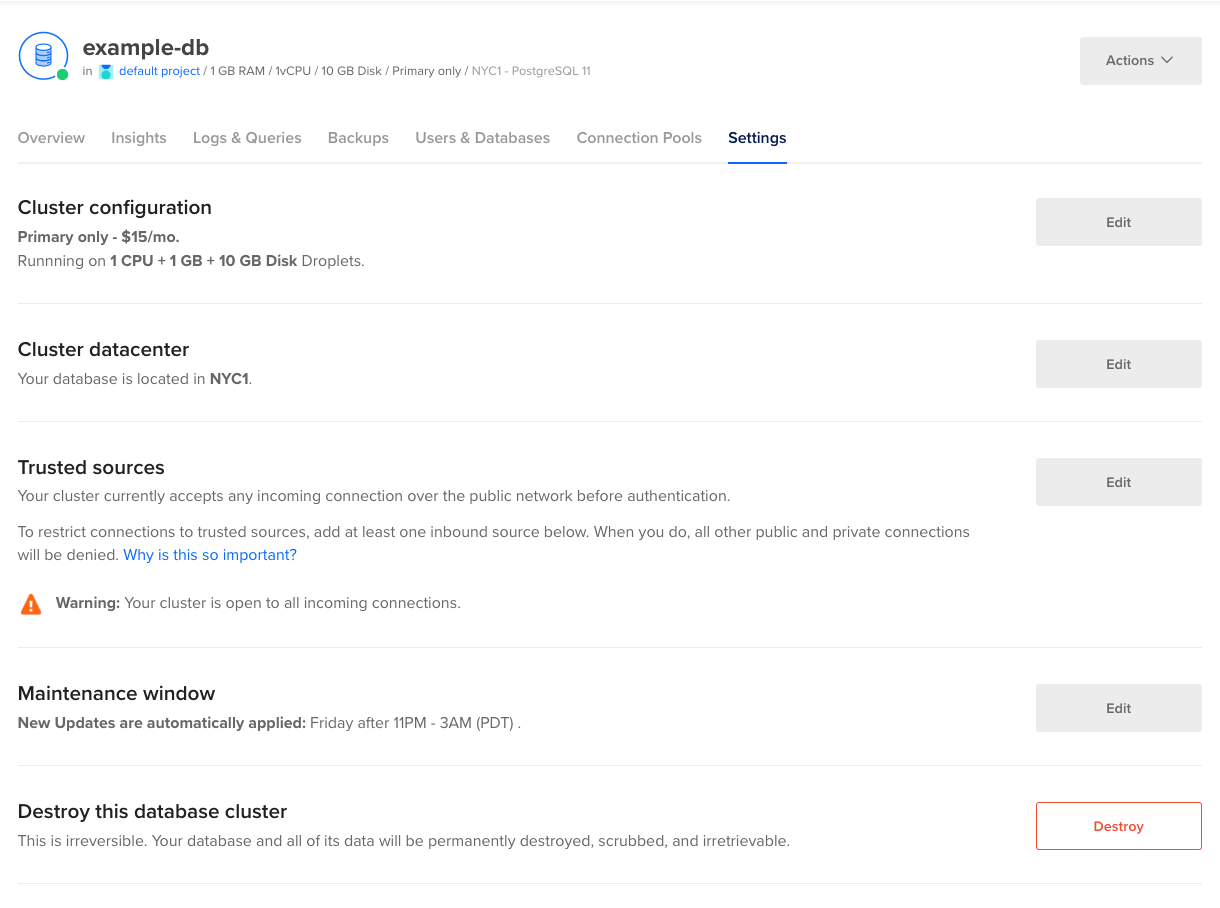How to Add Standby Nodes to MongoDB Database Clusters
Validated on 28 Jun 2021 • Last edited on 16 Apr 2025
MongoDB is a source-available cross-platform document-oriented database program for high-volume storage. Classified as a NoSQL database program, MongoDB uses JSON-like documents with optional schemas.
In a database cluster, standby nodes maintain a copy of the primary node. If the primary node fails, a standby node is automatically promoted to replace it. Additionally, standby nodes can direct routing for read traffic.
MongoDB clusters can only have two standby nodes at this time. This is necessary for a high availability cluster configuration. For more information about MongoDB’s high availability cluster architecture, see MongoDB’s official documentation.
You can add standby nodes during cluster creation in the cluster configuration section of the create page.
You can also add standby nodes to an existing database cluster. From the Databases page, click the name of the cluster to go to its Overview page, then click the Settings tab.

On the Settings page, in the Cluster configuration section, click Edit. Open the Standby Nodes drop-down and choose the number of standby nodes.

When you’re done, click Save to immediately provision the standby nodes. The time to complete varies depending on the size of the primary node and its data, but we recommend allowing at least 5 minutes.